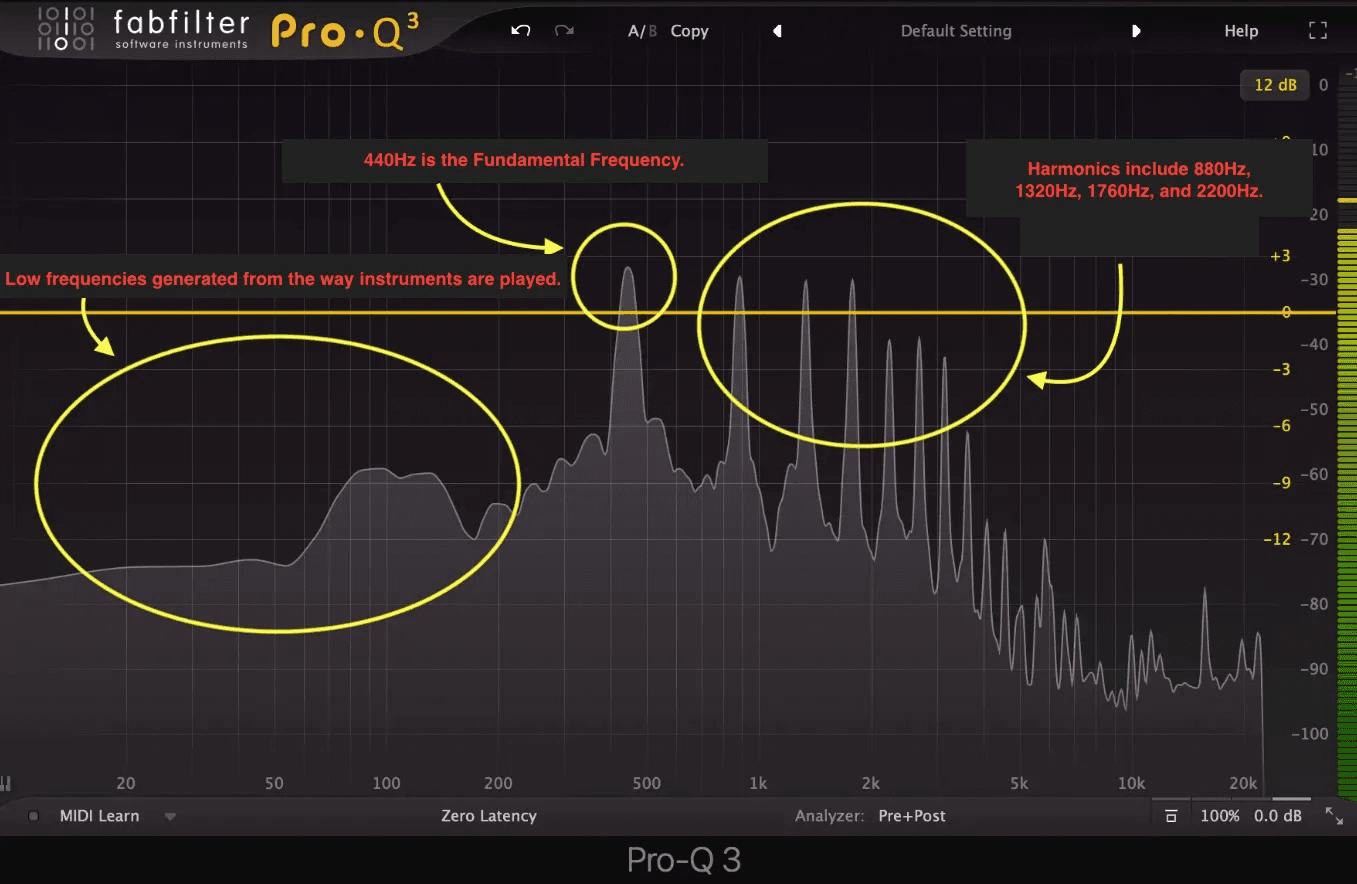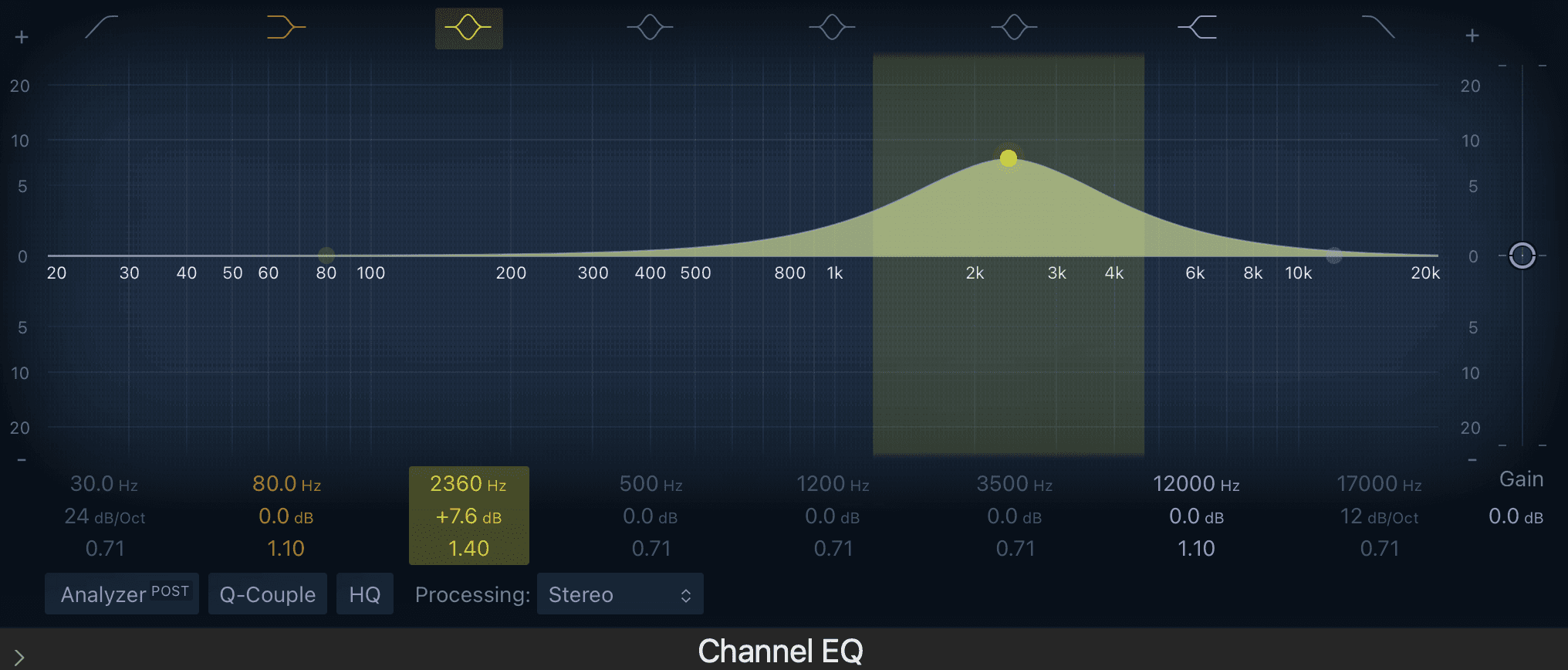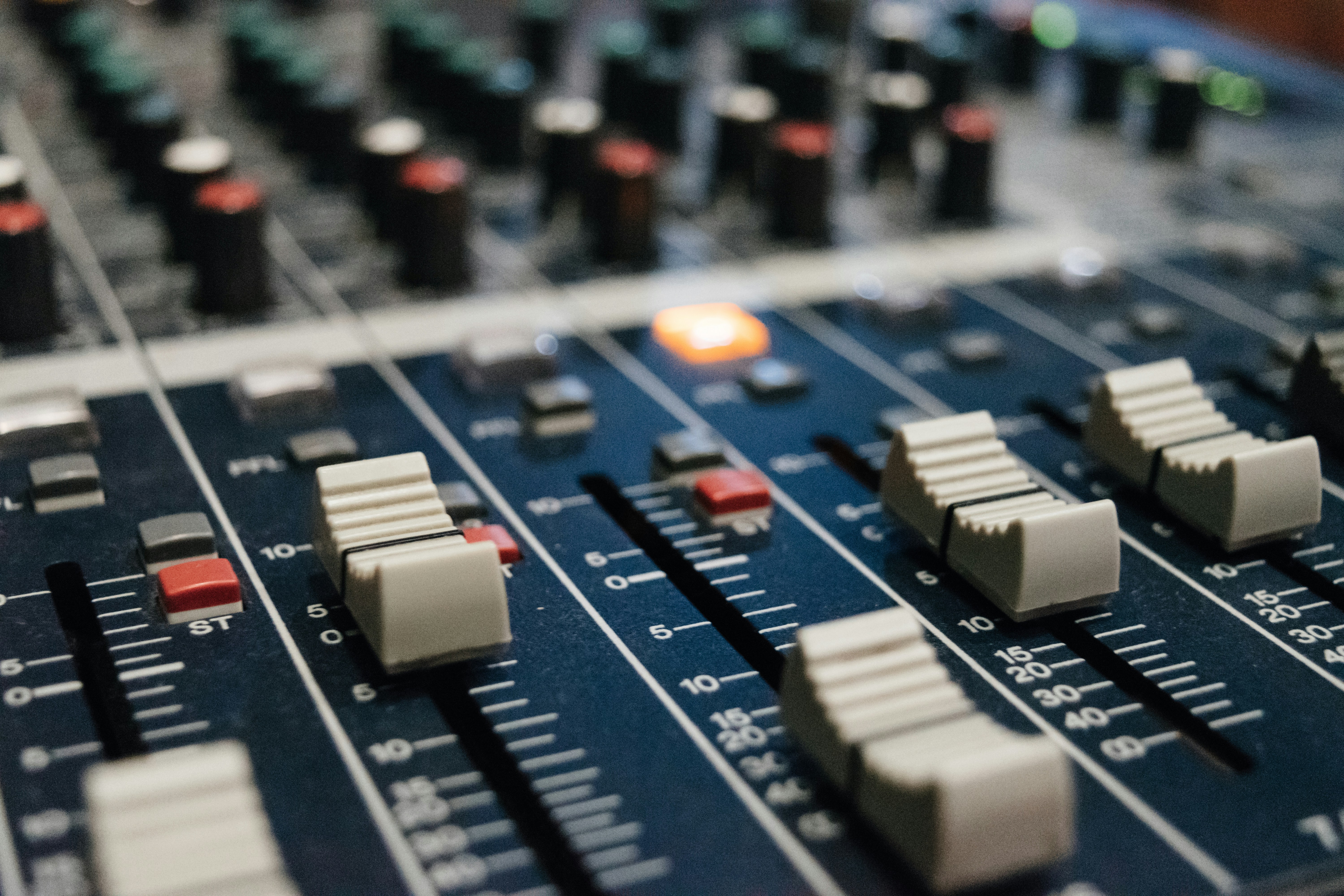Oct 25, 2024
Oct 25, 2024
Oct 25, 2024
Essential EQ Mixing Tips You Can Try Today for Better Sound
Essential EQ Mixing Tips You Can Try Today for Better Sound
Essential EQ Mixing Tips You Can Try Today for Better Sound
With practice and careful listening, you'll develop your own EQ techniques that fit your style and enhance your mixes. Keep experimenting, trust your ears, and let your creativity shine in every track.
With practice and careful listening, you'll develop your own EQ techniques that fit your style and enhance your mixes. Keep experimenting, trust your ears, and let your creativity shine in every track.
With practice and careful listening, you'll develop your own EQ techniques that fit your style and enhance your mixes. Keep experimenting, trust your ears, and let your creativity shine in every track.

Keohyun Noh
Keohyun Noh
Keohyun Noh
Sound Engineer
Sound Engineer
Sound Engineer
production tips
production tips
production tips
4 Min Read
4 Min Read
4 Min Read



Now that you understand the characteristics of different frequency ranges, let’s explore some practical tips for using EQ effectively.
If you still need basic information about EQ and mixing, be sure to check out "Mixing 101: How to Mix a Song" and "What is EQ and How to Use It: A Complete Guide."
Fundamental Frequency and Harmonics
Specific sounds with distinct pitches have a Fundamental Frequency, often referred to as the root frequency. Additionally, frequencies that are multiples of that root frequency are known as Harmonics. To listen for the range of fundamental frequencies and harmonics of each instrument, adjust the volume of specific frequencies using EQ. By recognizing how the fundamental and harmonic sounds differ, you'll know which frequency ranges to cut or boost.

Identifying the Frequencies of Fundamental and Harmonics
To avoid guesswork with EQ, it’s essential to clearly identify the fundamental and harmonic frequencies of the instruments or vocals. To maintain the presence of vocals among instruments, check the frequencies of the vocals' fundamentals and harmonics, and apply EQ to overlapping sounds from instruments like piano, violin, guitar, and snare. If vocals still don't stand out, you may need to explore other methods. For instance, kick drums typically have a fundamental frequency around 80-100Hz and harmonics overlapping with vocals at 2-3kHz. Reducing the 2-3kHz range of the kick drum can make the vocals clearer and more prominent.
Virtual Instruments
Most virtual instruments come with pre-applied EQ for a polished sound. When working with music composed solely of virtual instrument tracks, it’s important to use minimal EQ while considering the overall balance of the music.
Isolated Adjustments
When adjusting EQ to eliminate unwanted sounds from an instrument or vocal, it’s crucial to solo that track while making adjustments and then listen to the full mix to reassess. Focusing too much on eliminating undesirable sounds may result in a mix that lacks character.
Kick and Bass Relationship
To maintain a solid and strong low-end, the relationship between the kick drum and bass is critical. Listen to the fundamentals of each and ensure they don't interfere with each other at specific frequency ranges. If the kick drum’s fundamental frequency is around 90Hz, try cutting the bass slightly at 90Hz. This will make the kick sound more prominent.
Clearing the Mix
If the overall mix sounds muddy, try adjusting instruments that fall within the 125-500Hz range. If electric guitars, pianos, or keyboard and pad instruments sound heavy, starting adjustments with these instruments is advisable.
Avoiding Overcrowding
Too much energy in the 500Hz-1kHz range can make the overall sound feel woody or boxy, resulting in an unbalanced mix. Instruments like acoustic guitars, percussion, and electric pianos often produce such sounds due to their broad midrange frequencies.
Managing High Frequencies
If frequencies above 2kHz are too pronounced, the sound may become thin and harsh. Many instruments have high harmonics and attack characteristics in the 4-8kHz range, so it’s essential to manage these frequencies to avoid a thin or piercing sound.
Listening Fatigue
Focusing too much on high frequencies can quickly tire your ears. It’s important to take regular breaks to maintain objectivity in your listening.
Adaptation to EQ Changes
Remember that our ears quickly adapt to EQ changes. We often perceive altered sounds as better, and we tend to believe that louder sounds inherently have better tone. If you feel you've strayed too far from your intended sound, consider bypassing the EQ or reverting to a previous stage to reassess the original sound.
Effective Cutting vs. Boosting
Cutting frequencies can be as effective as boosting them, and sometimes even more so. By cutting specific frequency ranges, you can make adjacent frequencies stand out more and prevent overload. This principle can be applied across various aspects of the mix. Eliminating unwanted elements can often yield a more natural mix than applying excessive effects.
Using High-Pass Filters
Try using a high-pass filter (HPF) on all instruments except for kick and bass. This will clarify the low-end. Many instruments have unnecessary low-end noise, so if you find the low frequencies cluttered, actively use HPF. Start by soloing the drums, then unmute the bass, and gradually add other instruments. Begin with the HPF at 60Hz and gradually raise the frequency. If you feel the tone is thinning out, lower the frequency again. Adjust the low-end without compromising the original tone.
Choosing EQ for Different Purposes
Modern mixing often takes place "in the box," meaning it's done within a DAW and plugins. While some engineers still mix using analog methods, hybrid mixing that combines both plugins and hardware is also popular. In plugin-based mixing, it's essential to understand the strengths and weaknesses of each plugin. EQ plugins generally fall into two categories: Surgical EQ and Musical EQ. Surgical EQs are pure digital EQs that allow precise cuts and boosts with accurate Q values. They provide clean, accurate adjustments without adding specific harmonics. In contrast, Musical EQs may find it more challenging to make extreme cuts and boosts but can enhance sound texture and color through harmonic distortion. Choosing the right EQ based on your needs can help you achieve your desired sound.
Avoiding Extreme EQ
Lastly, avoid using extreme EQ settings. Excessive EQ typically indicates that the original source wasn't produced as intended. In such cases, re-recording or recreating the sound is often a better approach.
In summary, mastering EQ is essential for creating polished and professional mixes. By understanding frequency ranges and making thoughtful adjustments, you can improve the clarity and balance of your music. Whether you're cutting unwanted frequencies or making targeted boosts, remember that subtle changes often work best. With practice and careful listening, you'll develop your own EQ techniques that fit your style and enhance your mixes. Keep experimenting, trust your ears, and let your creativity shine in every track.

Now that you understand the characteristics of different frequency ranges, let’s explore some practical tips for using EQ effectively.
If you still need basic information about EQ and mixing, be sure to check out "Mixing 101: How to Mix a Song" and "What is EQ and How to Use It: A Complete Guide."
Fundamental Frequency and Harmonics
Specific sounds with distinct pitches have a Fundamental Frequency, often referred to as the root frequency. Additionally, frequencies that are multiples of that root frequency are known as Harmonics. To listen for the range of fundamental frequencies and harmonics of each instrument, adjust the volume of specific frequencies using EQ. By recognizing how the fundamental and harmonic sounds differ, you'll know which frequency ranges to cut or boost.

Identifying the Frequencies of Fundamental and Harmonics
To avoid guesswork with EQ, it’s essential to clearly identify the fundamental and harmonic frequencies of the instruments or vocals. To maintain the presence of vocals among instruments, check the frequencies of the vocals' fundamentals and harmonics, and apply EQ to overlapping sounds from instruments like piano, violin, guitar, and snare. If vocals still don't stand out, you may need to explore other methods. For instance, kick drums typically have a fundamental frequency around 80-100Hz and harmonics overlapping with vocals at 2-3kHz. Reducing the 2-3kHz range of the kick drum can make the vocals clearer and more prominent.
Virtual Instruments
Most virtual instruments come with pre-applied EQ for a polished sound. When working with music composed solely of virtual instrument tracks, it’s important to use minimal EQ while considering the overall balance of the music.
Isolated Adjustments
When adjusting EQ to eliminate unwanted sounds from an instrument or vocal, it’s crucial to solo that track while making adjustments and then listen to the full mix to reassess. Focusing too much on eliminating undesirable sounds may result in a mix that lacks character.
Kick and Bass Relationship
To maintain a solid and strong low-end, the relationship between the kick drum and bass is critical. Listen to the fundamentals of each and ensure they don't interfere with each other at specific frequency ranges. If the kick drum’s fundamental frequency is around 90Hz, try cutting the bass slightly at 90Hz. This will make the kick sound more prominent.
Clearing the Mix
If the overall mix sounds muddy, try adjusting instruments that fall within the 125-500Hz range. If electric guitars, pianos, or keyboard and pad instruments sound heavy, starting adjustments with these instruments is advisable.
Avoiding Overcrowding
Too much energy in the 500Hz-1kHz range can make the overall sound feel woody or boxy, resulting in an unbalanced mix. Instruments like acoustic guitars, percussion, and electric pianos often produce such sounds due to their broad midrange frequencies.
Managing High Frequencies
If frequencies above 2kHz are too pronounced, the sound may become thin and harsh. Many instruments have high harmonics and attack characteristics in the 4-8kHz range, so it’s essential to manage these frequencies to avoid a thin or piercing sound.
Listening Fatigue
Focusing too much on high frequencies can quickly tire your ears. It’s important to take regular breaks to maintain objectivity in your listening.
Adaptation to EQ Changes
Remember that our ears quickly adapt to EQ changes. We often perceive altered sounds as better, and we tend to believe that louder sounds inherently have better tone. If you feel you've strayed too far from your intended sound, consider bypassing the EQ or reverting to a previous stage to reassess the original sound.
Effective Cutting vs. Boosting
Cutting frequencies can be as effective as boosting them, and sometimes even more so. By cutting specific frequency ranges, you can make adjacent frequencies stand out more and prevent overload. This principle can be applied across various aspects of the mix. Eliminating unwanted elements can often yield a more natural mix than applying excessive effects.
Using High-Pass Filters
Try using a high-pass filter (HPF) on all instruments except for kick and bass. This will clarify the low-end. Many instruments have unnecessary low-end noise, so if you find the low frequencies cluttered, actively use HPF. Start by soloing the drums, then unmute the bass, and gradually add other instruments. Begin with the HPF at 60Hz and gradually raise the frequency. If you feel the tone is thinning out, lower the frequency again. Adjust the low-end without compromising the original tone.
Choosing EQ for Different Purposes
Modern mixing often takes place "in the box," meaning it's done within a DAW and plugins. While some engineers still mix using analog methods, hybrid mixing that combines both plugins and hardware is also popular. In plugin-based mixing, it's essential to understand the strengths and weaknesses of each plugin. EQ plugins generally fall into two categories: Surgical EQ and Musical EQ. Surgical EQs are pure digital EQs that allow precise cuts and boosts with accurate Q values. They provide clean, accurate adjustments without adding specific harmonics. In contrast, Musical EQs may find it more challenging to make extreme cuts and boosts but can enhance sound texture and color through harmonic distortion. Choosing the right EQ based on your needs can help you achieve your desired sound.
Avoiding Extreme EQ
Lastly, avoid using extreme EQ settings. Excessive EQ typically indicates that the original source wasn't produced as intended. In such cases, re-recording or recreating the sound is often a better approach.
In summary, mastering EQ is essential for creating polished and professional mixes. By understanding frequency ranges and making thoughtful adjustments, you can improve the clarity and balance of your music. Whether you're cutting unwanted frequencies or making targeted boosts, remember that subtle changes often work best. With practice and careful listening, you'll develop your own EQ techniques that fit your style and enhance your mixes. Keep experimenting, trust your ears, and let your creativity shine in every track.

Now that you understand the characteristics of different frequency ranges, let’s explore some practical tips for using EQ effectively.
If you still need basic information about EQ and mixing, be sure to check out "Mixing 101: How to Mix a Song" and "What is EQ and How to Use It: A Complete Guide."
Fundamental Frequency and Harmonics
Specific sounds with distinct pitches have a Fundamental Frequency, often referred to as the root frequency. Additionally, frequencies that are multiples of that root frequency are known as Harmonics. To listen for the range of fundamental frequencies and harmonics of each instrument, adjust the volume of specific frequencies using EQ. By recognizing how the fundamental and harmonic sounds differ, you'll know which frequency ranges to cut or boost.

Identifying the Frequencies of Fundamental and Harmonics
To avoid guesswork with EQ, it’s essential to clearly identify the fundamental and harmonic frequencies of the instruments or vocals. To maintain the presence of vocals among instruments, check the frequencies of the vocals' fundamentals and harmonics, and apply EQ to overlapping sounds from instruments like piano, violin, guitar, and snare. If vocals still don't stand out, you may need to explore other methods. For instance, kick drums typically have a fundamental frequency around 80-100Hz and harmonics overlapping with vocals at 2-3kHz. Reducing the 2-3kHz range of the kick drum can make the vocals clearer and more prominent.
Virtual Instruments
Most virtual instruments come with pre-applied EQ for a polished sound. When working with music composed solely of virtual instrument tracks, it’s important to use minimal EQ while considering the overall balance of the music.
Isolated Adjustments
When adjusting EQ to eliminate unwanted sounds from an instrument or vocal, it’s crucial to solo that track while making adjustments and then listen to the full mix to reassess. Focusing too much on eliminating undesirable sounds may result in a mix that lacks character.
Kick and Bass Relationship
To maintain a solid and strong low-end, the relationship between the kick drum and bass is critical. Listen to the fundamentals of each and ensure they don't interfere with each other at specific frequency ranges. If the kick drum’s fundamental frequency is around 90Hz, try cutting the bass slightly at 90Hz. This will make the kick sound more prominent.
Clearing the Mix
If the overall mix sounds muddy, try adjusting instruments that fall within the 125-500Hz range. If electric guitars, pianos, or keyboard and pad instruments sound heavy, starting adjustments with these instruments is advisable.
Avoiding Overcrowding
Too much energy in the 500Hz-1kHz range can make the overall sound feel woody or boxy, resulting in an unbalanced mix. Instruments like acoustic guitars, percussion, and electric pianos often produce such sounds due to their broad midrange frequencies.
Managing High Frequencies
If frequencies above 2kHz are too pronounced, the sound may become thin and harsh. Many instruments have high harmonics and attack characteristics in the 4-8kHz range, so it’s essential to manage these frequencies to avoid a thin or piercing sound.
Listening Fatigue
Focusing too much on high frequencies can quickly tire your ears. It’s important to take regular breaks to maintain objectivity in your listening.
Adaptation to EQ Changes
Remember that our ears quickly adapt to EQ changes. We often perceive altered sounds as better, and we tend to believe that louder sounds inherently have better tone. If you feel you've strayed too far from your intended sound, consider bypassing the EQ or reverting to a previous stage to reassess the original sound.
Effective Cutting vs. Boosting
Cutting frequencies can be as effective as boosting them, and sometimes even more so. By cutting specific frequency ranges, you can make adjacent frequencies stand out more and prevent overload. This principle can be applied across various aspects of the mix. Eliminating unwanted elements can often yield a more natural mix than applying excessive effects.
Using High-Pass Filters
Try using a high-pass filter (HPF) on all instruments except for kick and bass. This will clarify the low-end. Many instruments have unnecessary low-end noise, so if you find the low frequencies cluttered, actively use HPF. Start by soloing the drums, then unmute the bass, and gradually add other instruments. Begin with the HPF at 60Hz and gradually raise the frequency. If you feel the tone is thinning out, lower the frequency again. Adjust the low-end without compromising the original tone.
Choosing EQ for Different Purposes
Modern mixing often takes place "in the box," meaning it's done within a DAW and plugins. While some engineers still mix using analog methods, hybrid mixing that combines both plugins and hardware is also popular. In plugin-based mixing, it's essential to understand the strengths and weaknesses of each plugin. EQ plugins generally fall into two categories: Surgical EQ and Musical EQ. Surgical EQs are pure digital EQs that allow precise cuts and boosts with accurate Q values. They provide clean, accurate adjustments without adding specific harmonics. In contrast, Musical EQs may find it more challenging to make extreme cuts and boosts but can enhance sound texture and color through harmonic distortion. Choosing the right EQ based on your needs can help you achieve your desired sound.
Avoiding Extreme EQ
Lastly, avoid using extreme EQ settings. Excessive EQ typically indicates that the original source wasn't produced as intended. In such cases, re-recording or recreating the sound is often a better approach.
In summary, mastering EQ is essential for creating polished and professional mixes. By understanding frequency ranges and making thoughtful adjustments, you can improve the clarity and balance of your music. Whether you're cutting unwanted frequencies or making targeted boosts, remember that subtle changes often work best. With practice and careful listening, you'll develop your own EQ techniques that fit your style and enhance your mixes. Keep experimenting, trust your ears, and let your creativity shine in every track.







